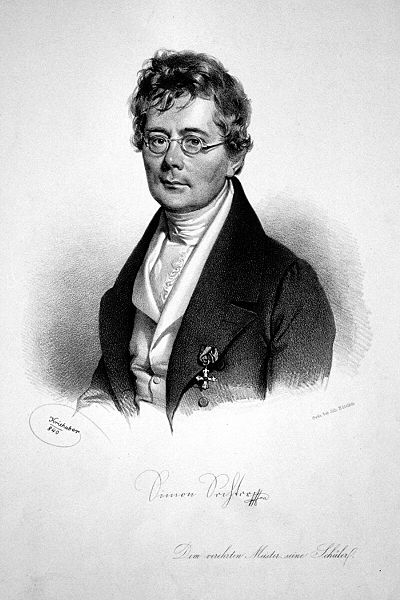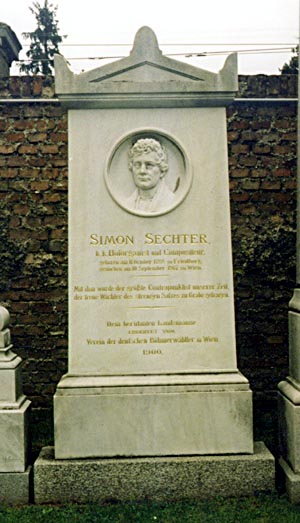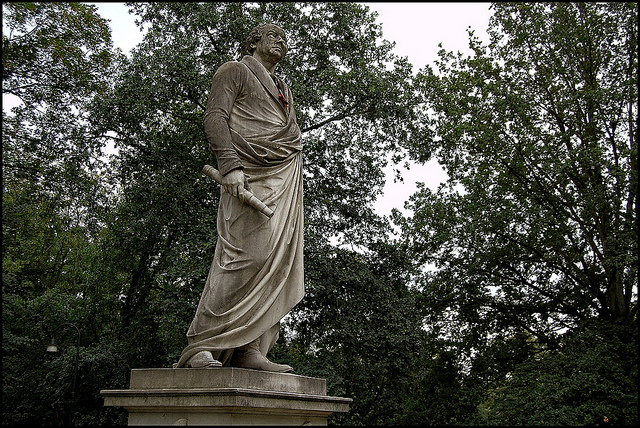<Back to Index>
- Physician and Astronomer Heinrich Wilhelm Matthäus Olbers, 1758
- Composer Simon Sechter, 1788
- Hetman of Ukraine Pylyp Stepanovych Orlyk, 1672
PAGE SPONSOR


Simon Sechter (11 October 1788 – 10 September 1867) was an Austrian music theorist, teacher, organist, conductor and composer.
Sechter was born in Friedberg (Frymburk), Bohemia, then part of the Austrian Empire, and moved to Vienna in 1804, succeeding Jan Václav Voříšek as court organist there in 1824. In 1810 he began teaching piano and voice at an academy for blind students. In 1828 the ailing Franz Schubert had one counterpoint lesson with him. In 1851 Sechter was appointed professor of composition at the Vienna Conservatory. In his last years, Sechter was generous to a fault, and died in poverty. He was succeeded at the Conservatory by Anton Bruckner, a former student whose teaching methods were based on Sechter's.
Others whom Sechter taught include the composer Henri Vieuxtemps, the conductor Franz Lachner, the teacher Eduard Marxsen (who taught Johannes Brahms piano and counterpoint), the composer and teacher Johann Nepomuk Fuchs, Gustav Nottebohm, Carl Umlauf, the conductor and composer Kéler Béla and the pianist - composers Sigismond Thalberg, Adolf von Henselt, and Theodor Döhler, to list a few.
Sechter had strict teaching methods. For instance, he forbade Bruckner to write any original compositions while studying counterpoint with him. The scholar Robert Simpson believes that "Sechter unknowingly brought about Bruckner's originality by insisting that it be suppressed until it could no longer be contained." Sechter taught Bruckner by mail from 1855 to 1861 and considered Bruckner his most dedicated pupil. Upon Bruckner's graduation, Sechter wrote a fugue dedicated to his student.
In the three - volume treatise on the principles of composition, Die Grundsätze der musikalischen Komposition, Sechter wrote a seminal work that influenced many later theorists. Sechter's ideas are derived from Jean - Philippe Rameau's theories of the fundamental bass, always diatonic even when the surface is highly chromatic; music theory historians strongly associate Sechter with the Viennese conception of fundamental bass theory. Sechter was an advocate of just intonation over well - tempered tuning.
Carl C. Müller compiled and adapted Sechter's Die richtige Folge der Grundharmonien as The Correct Order of Fundamental Harmonies: A Treatise on Fundamental Basses, and their Inversions and Substitutes.
Sechter was also a composer, and in that capacity is mostly remembered for writing about 5,000 fugues (he tried to write at least one fugue every day), but he also wrote masses and oratorios. In addition he wrote five operas Das Testament des Magiers (1842), Ezzeline, die unglückliche Gegangene aus Deli - Katesse (1843), Ali Hitsch - Hatsch (1844), Melusine (1851), and Des Müllers Ring (?). In 1823 - 24, he was one of the 50 composers who composed a variation on a waltz by Anton Diabelli for Vaterländischer Künstlerverein.
He may have been the most prolific composer
who ever lived, outdoing even Georg Philipp Telemann in the
quantity of his output.
